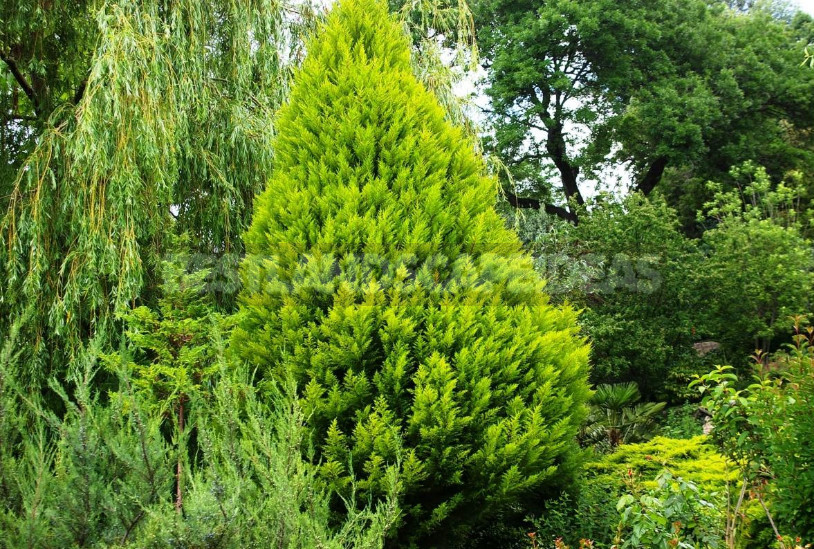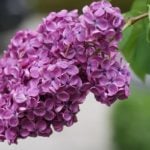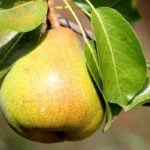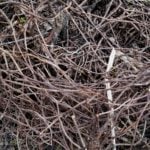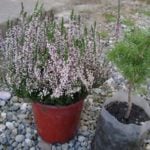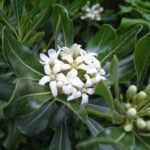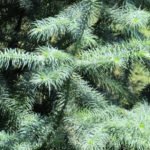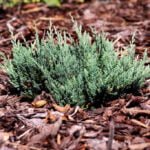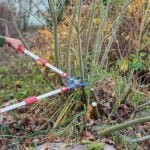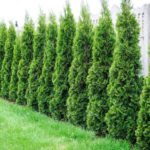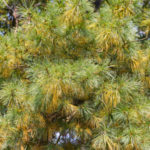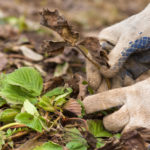Today I will introduce you to the species, selected mainly by similarity or General appearance (habitus), or only in a certain phase (flowering, fruiting). Of course, the basis for selection of pairs is my subjective perception, therefore, especially interested to know your opinion — how accurately I hit the target.
It is possible that someone will ask: “Why do we need double plants?”The answer to this question has repeatedly sounded on the site: some users want to give themselves a southern exotic, which is doomed to freezing, but it can and should be replaced by a winter-hardy look, a form of similar habit. Another situation that can be solved in this way: sometimes it is not possible to buy a particular plant, and buy a double — no problem. Moreover, flower ” twins “will help you to choose an analogue of the desired flowering period for the composition, and” twins ” in aromas will make it possible to create the desired aura of your favorite smell even when the original is not found.
But about everything-in order. Let’s start with closely related and far-related pairs of coniferous trees. In the photo in the collages on the left will be located winter-hardy representative (or representative) from the North, and on the right — heat-loving southern exot.
Chamaecyparis nootkatensis — x Cupressocyparis leylandii ‘Green Light’
Superficially they are very similar, the only difference is that Chamaecyparis nootkatensis tips of shoots ascending, often drooping.
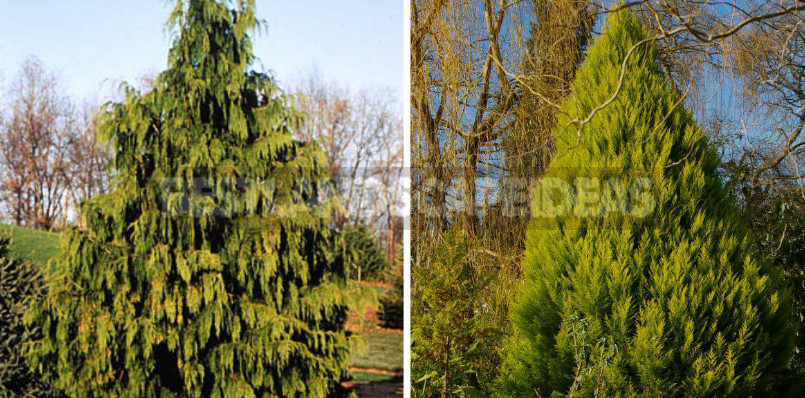
In the first 3 years after planting before the winter will have to hedge (in both cases) and mulch the soil with peat, dry needles. In the middle lane in snowless winters would be good to tie the crown with a soft twine and wrap it with burlap.
Larix decidua-Taxodium distichum and T. mucronatum
Both with falling needles, of course, are paired. The Northern beauty in the southern garden is quite possible to replace the Taxodium distichum. But for giving in the middle lane the last two species are not worth buying.
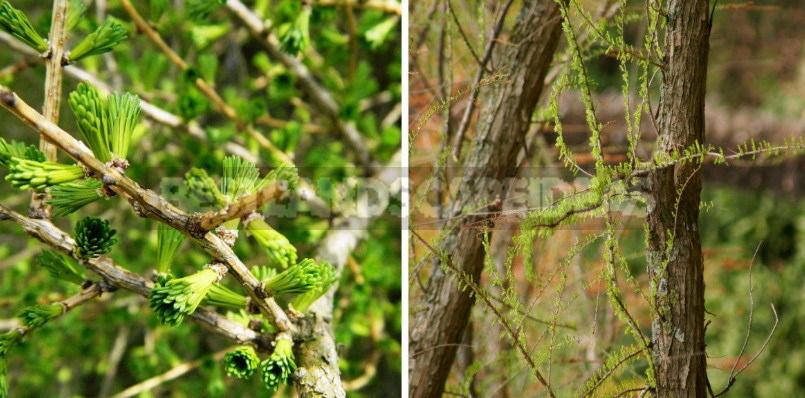
Taxodium distichum branches of summer growth acquire a reddish color in the autumn and fall off, and the green needles on the shortened shoots gradually fall off during the whole winter, so the species is considered to be a conditionally winter-green tree.
Juniperus communis ‘Hibernica’ — Cupressus sempervirens ‘Stricta’
More than one pair can be made up of a wide variety of forms of Juniperus communis. Even more interesting to find them far southern “relatives”.
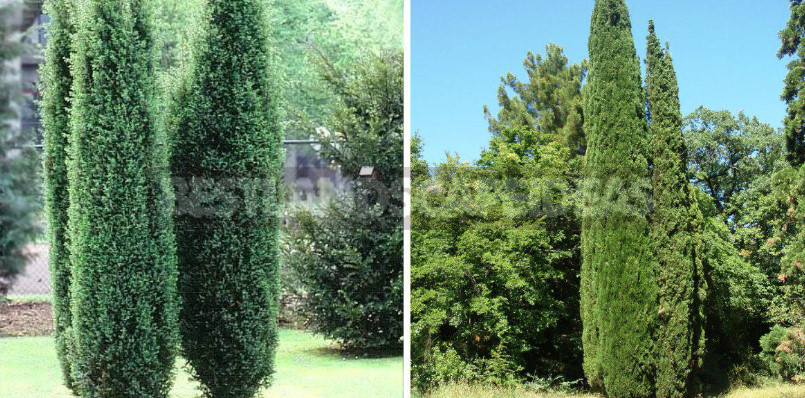
These are representatives of the most common columnar forms of compared species. In winter, the crown of Hibernica is better to bind with a soft twine, so that there is no break of branches under the weight of snow. For Stricta short-term snow is not a hindrance.
Juniperus communis ‘Arnold’ — Cupressus sempervirens ‘Indica’
This is a pair of even more narrow-minded, fusiform shapes.
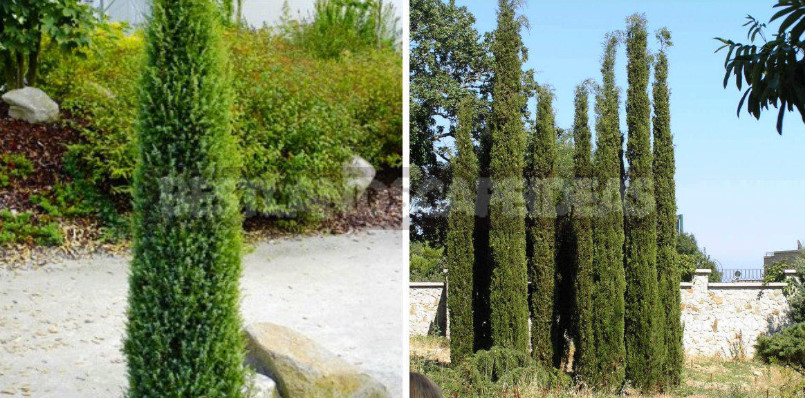
Beautiful, elegant, but each — in its area of cultivation.
Abies sibirica — Sequoiadendron giganteum
Tall (up to 25 m) Siberian beauty I was a couple of the highest (42.5 m) tree — Sequoiadendron giganteum.

They are both characterized by a clear conical crown. Of course, these large trees — tapeworms, which will be spectacular in large areas.
Abies koreana — Cedrus libani
If we consider the cones of coniferous trees, the” barrels ” of cedars, which crumble at full maturation of seeds, more similar to those Abies. And those, and other clearly directed upward.
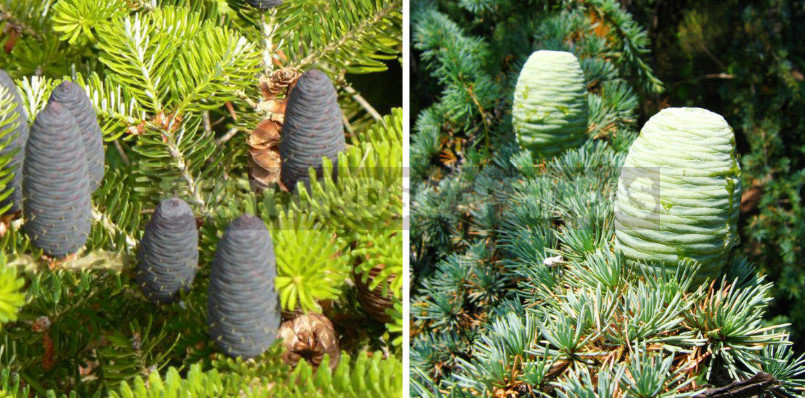
But habitually cedars, especially at a young age, more like spruce. Look at the next couple.
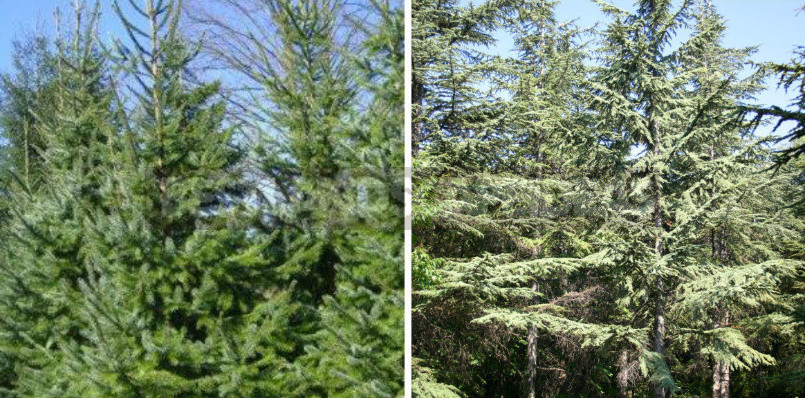
Adult specimens of these species cedars: C. libani, C. atlantica, C. deodara and C. brevifolia vary the shape of the crown. For example, thermophilic K. Himalayan with weeping branches more like winter-hardy in the middle lane Pseudotsuga menziesii.
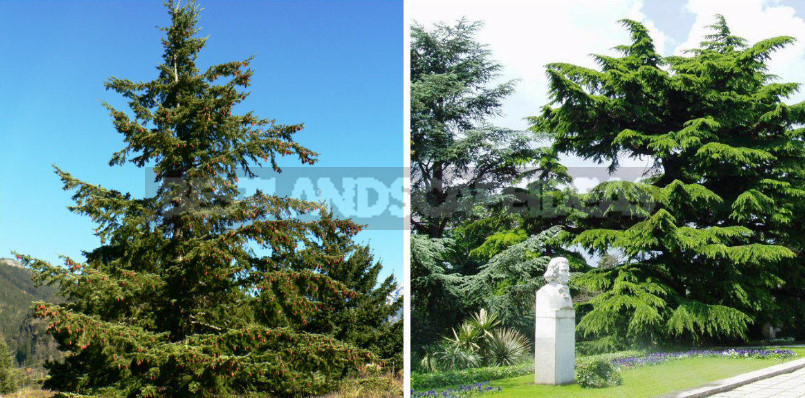
I picked up a pair for Cedrus brevifolia — the rarest in the South. A suitable partner for him was Abies alba.
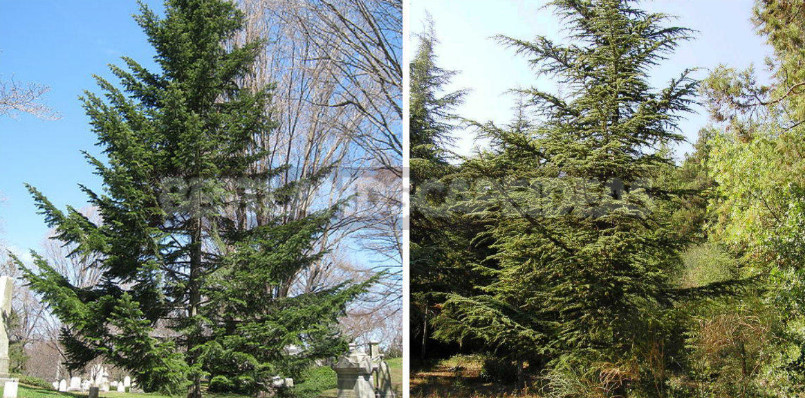
In severe winters may freeze not only young plants, but also in adults can be damaged last year’s peak growth.
Pinus strobus-Pinus wallichiana
Not one pair can be picked up among pines of northerners and southerners.
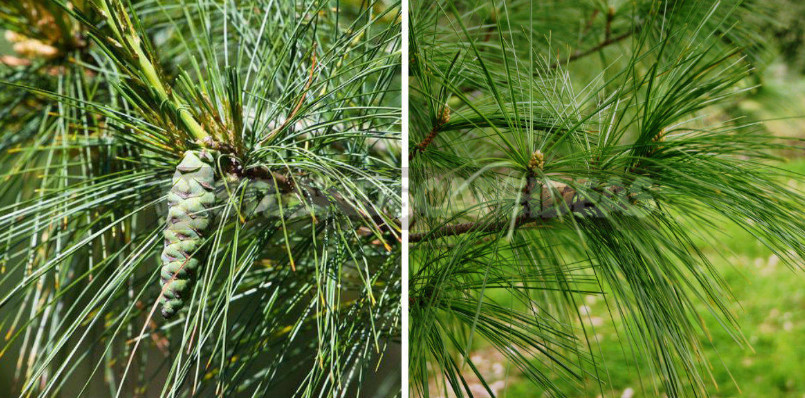
Pinus strobus-one of the most beautiful, with five needles in bunches. Enough winter-hardy in the middle lane, but may suffer from spring burns.
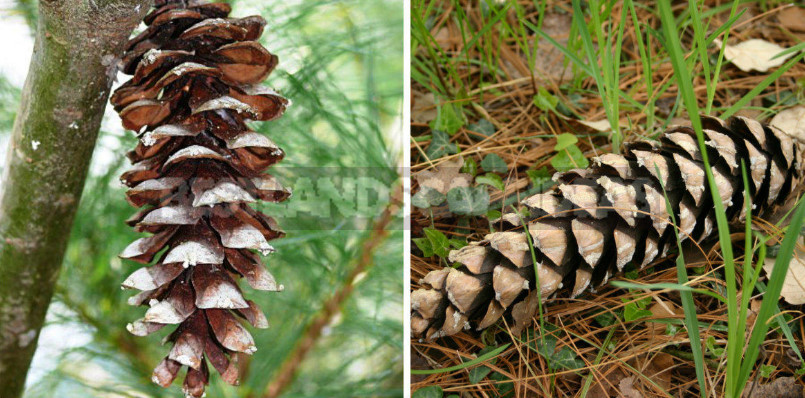
From Pinus wallichiana (it is more heat-loving), too beautiful needles collected in bundles of 5 needles. In addition, these pines are very similar and cones.
Pinus sibirica — Pinus pinea
Pinus sibirica I accidentally put in a couple of the southern Mediterranean Pinus pinea. Of course, you can find among the pines of the middle band and a more closer shape to its umbrella-shaped crown, but!
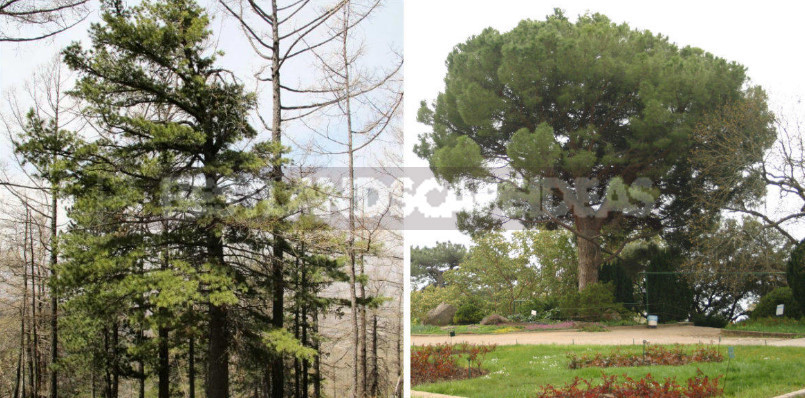
Look at the bumps!
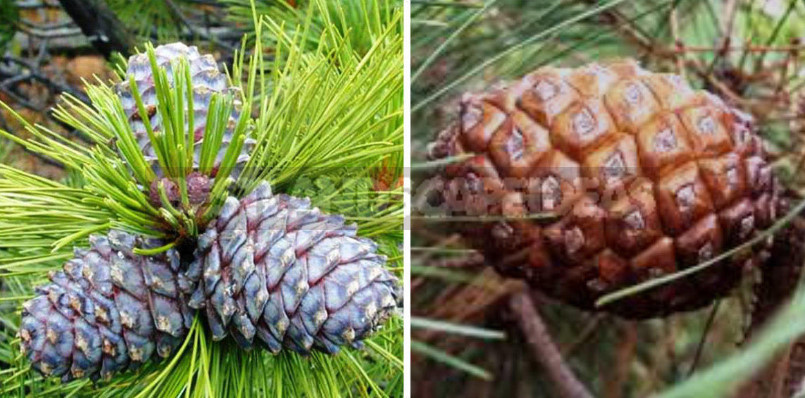
And the resemblance is not only external! Both pine cones have useful oily nuts.
The site has repeatedly asked questions about the Northern and southern pines. And not only I, but also other experts wrote that nature, like rivers, can not be reversed. For each region are good their coniferous beauties, adapted to certain climatic conditions, and change their places is not necessary.
Thuja occidentalis ‘Brabant’ — Cryptomeria japonica
In a pair with a kind of columnar Thuja occidentalis ‘Brabant’ became exotic Cryptomeria japonica. Both in comfortable conditions grow quickly: one-in the North, the other — in the South.
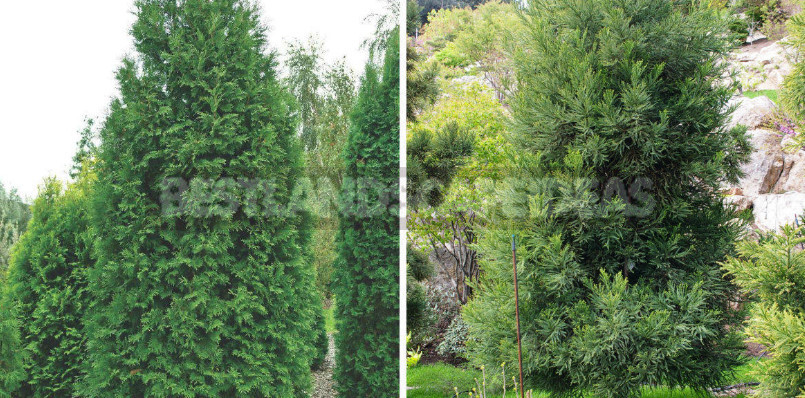
Many nurseries grow this Thuja adapted to local conditions. The Japanese southerner can be propagated by seeds, after ripening seeding them directly into the ground. In spring sowing need stratification for 2-3 months (at +1°C). When seed reproduction is obtained inhomogeneous offspring; forms are propagated by cuttings. It reaches the best development on damp acidic fertile soils; transfers shading, but suffers from winter waterlogging of the soil.
Thuja occidentalis ‘Smaragd Witbont’ – Platycladus orientalis
Thuja occidentalis and its forms are more winter-hardy than Platycladus orientalis and its cultivars.
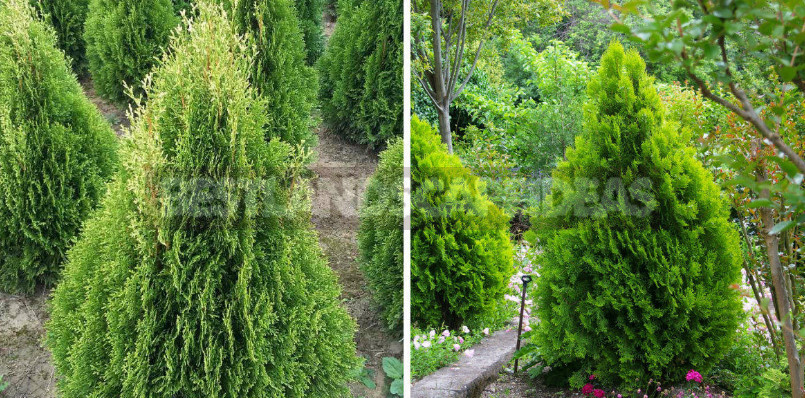
At the next meeting I will tell about deciduous plants-doubles for the southern and Northern dachas.
